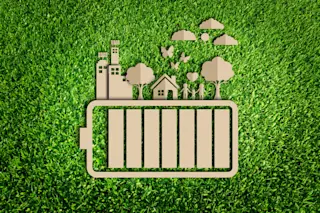Biofuels could be a crucial weapon against both rising temperatures and dwindling global oil supplies. They are made from organic material such as plants, so they essentially recycle existing carbon in the atmosphere instead of releasing new carbon from the depths of the earth; they are also, in principle, endlessly renewable. But the best-known biofuel, ethanol, is looking decidedly unpromising right now. Today most ethanol in the United States is made from corn, using an energy-intensive process that may not actually save a lot of fossil fuel, and in any case America cannot produce enough ethanol from corn to really matter.
Scientists have long tried to devise an efficient way to make ethanol from a wider range of raw materials, especially waste products rather than food. The U.S. government has calculated that the country could generate 1.4 billion tons of biomass a year. This could make 100 billion gallons of ...















